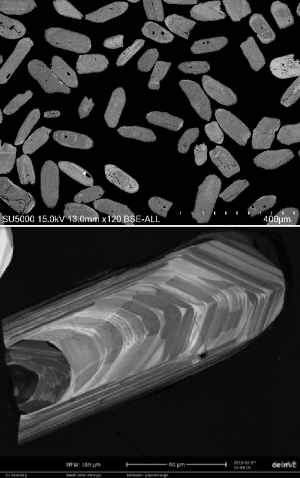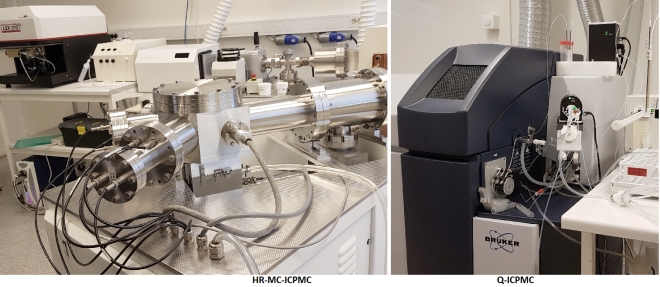Booking and prices
Prices and booking: Contact Facility Manager
Contact information:
Facility Manager: Magnus Kristoffersen
Location: Sem Sælands vei 1
0371 OSLO
Norway
Instrument:
The ICPMS lab consist of an inductively coupled plasma mass spectrometry instrument with the following equipment:
-
HR MC-ICPMS, Nu Plasma, from 2004
-
Cetac LSX-213 G2+ laser microprobe
-
Nu Instruments DSN-100 desolvating nebulizer
-
The lab has access to the shared sample preparation facilities at the department.
Description of services:
- Multicollector MC-ICPMS laboratory:
-
In-situ uranium-lead dating and lutetium-hafnium isotopic analyses of zircon, as well as lead isotopic analyses of solutions, are done routinely.
-
Analyses of other isotopic ratios in solid matter and solutions, may be possible, but must be discussed and tested to ascertain if it is possible to do the particular type of analysis in the lab.
-
Why ICPMS?

ICPMS (inductively coupled plasma mass spectrometry) is an analytical technique capable of ultra-trace detection because of the way it generates ions.
In an ICPMS instrument ionisation is achieved by using argon gas to produce a plasma. This c. 6000-7000 K plasma is capable of ionising most of the elements in the periodic table. The sample is passed through the plasma where it is ionised before it travels through the instrument, to the mass separator, where unwanted masses are filtered out, and ultimately to the detector.
ICPMS instruments are used in many different methods such as laser ablation uranium-lead dating of zircon where cathodoluminescence images (as seen on the right) can help identify areas of interest – zircon can record multiple growth events which can have different ages, trace and rare earth element concentration determination of solid and solution-based samples, lead isotope characterisation, etc.
The laboratory can by appointment be used for research activities and/or to assist students at the Department of Geosciences.
